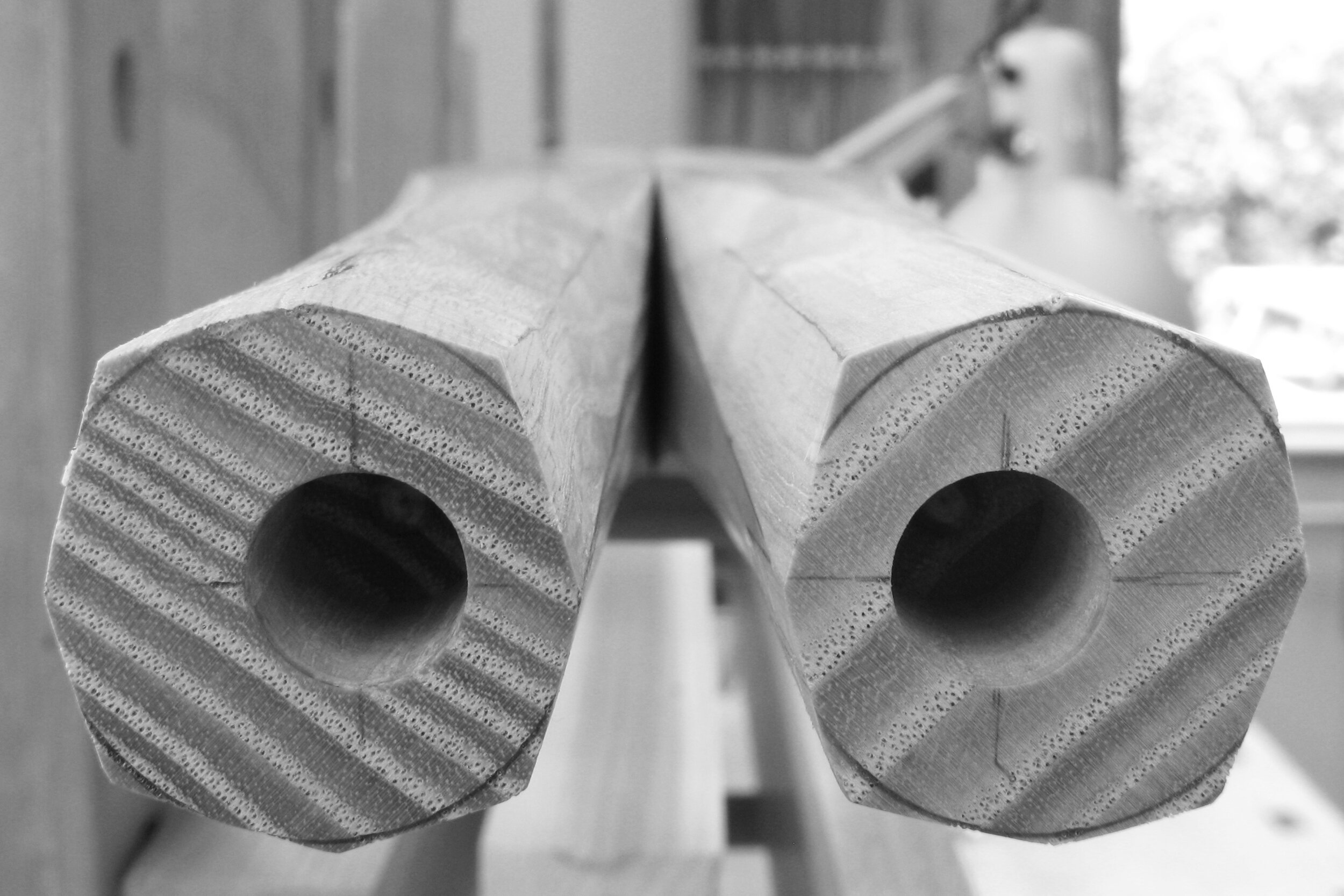Joinery and Shaping
After mortising the legs, this chair making journey continues with more joinery and shaping of the parts. Dowel joints are used at the tops of all four legs, so here I'm using the horizontal boring machine, the same one used to cut the slot mortises, to bore a hole into the top of one of the legs.
The back seat rail is next. After jointing and planing the stock, it is cut to length and then a tenon is cut on each end. Below you can see the result of cutting the shoulders of the tenon on the table saw, and the cheeks, or sides, of the tenon on the band saw. Well tuned machines are extremely useful in getting the joinery to this point, but now all the final fitting will be done using hand tools.
I take a break in the action to complete the making of a couple of handy tools. These include a chair scrape on the left that can be used for general shaping of chair parts and a spokeshave that is designed for shaping endgrain.
The original Vidar's chair includes a long taper on the inside face of the lower portion of all four legs which I've laid out with pencil in the photo below.
Then, I pull out the hand plane to remove the wood and create the taper.
Here it is!
I'm just getting to know the nuances of the spokeshave, but I've already produced what feels like a few kilometers of shavings. Here I'm creating chamfers on the legs to serve as reference surfaces for further development of the rounded portion of the leg.
After the basic shaping of the back legs is done, I move on to the lower back rail and then the lumbar rail, which you can see below. The vintage Wadkin sliding table saw here at Inside Passage makes a very accurate cut on the tenon shoulders.
One of the interesting aspects of chairmaking I've been studying these last 3 weeks includes orchestrating the grain graphics that will be expressed in the various parts. Below, I've made four cuts on the band saw to reveal the rough shape of the lumbar rail. First, you can see the full block of wood with fitted tenons on each end.
Then, with the front and back offcuts removed.
The top offcut is set aside.
And, finally, the bottom offcut.
In the near future, you'll see more about how the grain graphics turned out as I make further progress on the shaping. Here I'm hand planing the back of the lumbar rail.
It's time for a dry fit of all the back parts. This includes the two back legs, the lumbar rail at the top, the back seat rail in the middle, and the lower back stretcher at the bottom. Several dozen dry fits later, I've now fitted all six of these joints in this back assembly.
The lumbar rail needs two 1/2" deep mortises to support the back splats. Those are the vertical parts that support one's back when seated in the chair. I'm using the mortiser without an X-Y table. This method, sometimes referred to at the school as the "sport of freehand mortising", works great for small diameter slot mortises, and the set-ups are very quick.
The google eyes below are the tops of the front legs with preliminary chamfers cut using the spokeshave. These will be gradually rounded in stages to ensure a uniform transition between the rectangular and round portions of the leg profile.
Today, I began the final surfacing of the legs. The spokeshave is really an enjoyable tool to use. With a nice sharp edge on the iron and a very shallow depth of cut, it glides smoothly over the surface taking whisper thin shavings and leaving a very fine surface, ready for final finish. What a great way to spend a Saturday afternoon!
I'm building some momentum now and plan to complete the surface preparation of the entire back assembly tomorrow in hopes of gluing it up on Monday. Most of the rest of next week will be dedicated to the angled side and front leg assemblies.
Hej då!
Craig
Craig Johnson is a fiscal year 2012 recipient of an Artist Initiative grant from the Minnesota State Arts Board. This activity is made possible in part by a grant from the Minnesota State Arts Board, through an appropriation by the Minnesota State Legislature and by a grant from the National Endowment for the Arts.
● ● ●



















